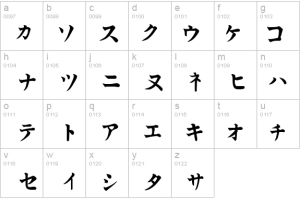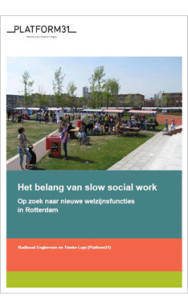Marky Ramone Go ~ 25 Urban And City Photographers You Should Follow On Instagram
In the last couple of years, we have seen an uptick in the urban and city photography movement as seen in the Instagram platform. One would instantly recall Brandon Stanton‘s Humans of New York series as one of the definitive examples of portraying our city landscape through its people. Today, more photographers are dishing out diverse methods of photographing urban areas and big city scenes through portraiture, architecture, culture and just about every event that can occur in our daily lives. These 25 Urban and City Photographers are just some of the many skilled shooters whose keen eye for detail have made their Instagram wall filled with outstading and penetrating imagery – enough for us to learn more about the many cities of the world, through their photographs. From the streets of New York, Hong Kong, Paris, Havana to Mumbai and the rest of the world, they walk the streets with camera in hand and a never-ceasing wonder as they witness and document the bountiful beautiful scenes of urban and city life.
Read & See: http://resourcemagonline.com/photographers
Gert Oostindie ~ Antillen op eigen benen, dat is echt teveel gevraagd
De Antillen zijn een Haags ‘hoofdpijndossier’: bestuurlijke problemen, financiële risico’s, armoede, culturele botsingen, migratie. Politici in Den Haag weten drommels goed dat er geen gemakkelijke oplossingen zijn, dat beleid alleen kans van slagen heeft als er wordt samengewerkt met bestuurders overzee, en dat er altijd geld bij moet.
Dat is electoraal geen gemakkelijk verhaal.
De meeste Nederlanders zouden het prima vinden als de banden werden doorgesneden. De realiteit is echter dat de Antilliaanse bevolking, op alle zes eilanden, de band met Nederland op goede gronden als cruciaal beschouwt, en dat Den Haag geen staatkundige of volkenrechtelijke middelen heeft om eenzijdig met de Antillen te breken.
http://www.comitekoninkrijksrelaties.org/antillen-op-eigen-benen
The Case Of “Fukushima” ~ Notation Choice As A Highlighting Device In Ad Hoc Concept Construction
 Abstract
Abstract
The irregular use of katakana has been analysed mainly in descriptive terms and is often considered to be a device for creating homonyms or communicating emotions (See Ogakiuchi, 2010). This chapter examines the irregular use of katakana notation from the perspective of relevance theory. Unlike previous studies, which have focused on the images and emotions the katakana notation system is said to communicate, this chapter focuses on concepts communicated by the use of words when they are written in katakana rather than other usual notations. I show that the irregular use of katakana is just one of many devices used for highlighting ad hoc concepts that can be found universally and should be analysed in a wider context than describing the functions of this notation,which is unique to Japanese. I argue that a cognitively grounded relevance theoretic account, in particular the notions of ad hoc concepts and metarepresentation, enables us to provide an explanation for observations made in previous studies.
The paper concludes that emotions attributed to the use of katakana and the homonyms which katakana notation appears to create can be explained in terms of repeated metarepresentation of ad hoc concepts and attributed thoughts communicated by the concepts.
Introduction –The Japanese Writing System
The Japanese writing system uses three different types of notation. The first is kanji, which is logographic. Each kanji character has a “meaning” and is used for conceptual words. There are also two alphabet systems, hiragana and katakana. Hiragana is phonographic and used for particles, connectives, and other “function words”, as well as being used by children (and adults) when they do not know which kanji to use. Katakana is also phonographic and is mainly used for loan words, onomatopoeia, and the names of animals, species, flowers, etc. It is convention that all three notation systems are used as required. Example (1) demonstrates this:
(1) ジョンの 庭にネコが 入ってきた.
John no niwa ni neko ga haitte kita
John GEN garden LOC cat SUB entered
“A cat came into John’s garden.”
In (1), two conceptual words,“garden”and “enter”, are written in kanji: 庭 and 入, respectively. Hiragana is used for particles,“no” (の) and “ni” (に), part of verb conjugation (ってきた), and the subject marker“ga” (が). Although they are conceptual words, katakana is used for “John” (ジョン) and “cat” (ネコ) as John is non-Japanese and “cat” is the name of an animal.
The choice of notation system is based on this convention and one’s ability – if one does not know or remember how to write a certain kanji, one might choose to write the word in hiragana or katakana. This is particularly the case for children and in hand-written texts. This paper does not aim to analyse these cases, where choice of notation is based on personal abilities. Nor does it deal with cases where katakana notation is used as it is expected to be. Instead, this study will focus on cases where the use of katakana cannot be explained in terms of personal abilities or preferences. In particular, I shall focus on cases in which katakana is used where it is not expected or not because of personal preference/abilities. A particular focus will be placed on correlations between choice of notation and construction of ad hoc concepts, where the use of katakana seems to trigger concept adjustment. See “Fukushima”in (2)[i]:
(2) チェルノブイリからフクシマへ「同じ道たどらないで」
Chernobyl kara Fukushima e “onaji michi tadoranaide”
Chernobyl FROM Fukushima LOC “same road follow-NEG-IMPERATIVE”
From Chernobyl to Fukushima: “Please do not go the way we did”
(Sekine 2011)
“Fukushima” is the name of a town and, normally, it is written as 福島 in kanji. However, in (2), it is written as フクシマ in katakana, and it seems to communicate more than just a name. What does it communicate? How is it different from “Fukushima” written in kanji? In following sections, I will first look at how katakana notation has been dealt with in previous studies and then present an alternative account from the perspective of relevance theory. Read more
Allison Meier ~ The Revolution Has Been Digitized: Explore The Oldest Archive Of Radical Posters
The oldest public collection of radical history completed a digital archive of over 2,000 posters. The Joseph A. Labadie Collection at the University of Michigan Library announced this month that its posters on anarchism, civil liberties, feminism, labor, and other political movements are online for the first time.
“It’s not enough for us to preserve the artifact if people cannot see it,” Julie Herrada, Labadie Collection curator, told Hyperallergic. “Posters are a difficult format because they are fragile and can only withstand so much physical handling, so providing access to these materials while keeping them safe is a complicated process, or it was, until the technology and resources became more readily available to us.”
Read more: http://hyperallergic.com/the-revolution
Bart Jacobs ~ Papiamentu: een Trans-Atlantische tocht
Het Papiaments, de taal van Aruba, Bonaire en Curaçao, is één van de spannendste talen ter wereld. Waarom is het Papiamentse woord voor ‘wit’, blanku, van het Spaans afgeleid, terwijl dat voor ‘zwart’, pretu, van het Portugees komt? En is deze taal echt in het Caraïbisch gebied ontstaan of komt ze eigenlijk uit Afrika? En hoe kon het Papiaments zich tegenover het koloniale Nederlands handhaven?
Mengtaal
Kreooltalen, zoals het Papiaments, zijn in het koloniale tijdperk ontstaan uit het contact tussen kolonisten en slaven. Het zijn dus extreem jonge talen in vergelijking met millennia oude Indo-Europese talen zoals het Nederlands, Engels of Portugees. Maar hoewel het Papiaments een jonge taal is, heeft het al een bijzonder turbulente en bonte geschiedenis achter de rug. Dit bonte karakter is goed terug te zien in de gemengde woordenschat. Hoewel de basiswoordenschat uit Spaanse en Portugese woorden bestaat (waarover straks meer), bevat het lexicon ook woorden en elementen van Afrikaanse oorsprong (bijv. nan [3e persoon meervoud], yongotá ‘hurken’, makamba ‘makker’, tambú ‘lokale dans- en muzieksoort’), Indiaanse (voornamelijk flora, fauna, en toponymen), Nederlandse (bijv. hanchi, wak, lesa, blo, sua, hopi < Ned. gangetje, waken, lezen, bloot, zwager, hoop/hopie) en Engelse oorsprong (bijv. bek, pusha < Eng. back, push). Het is eenvoudig om in het Papiaments zinnen te maken met elementen uit vier of meer talen. Het Papiaments is daarmee veel gemengder dan de meeste andere creooltalen: het Jamaican Creole, bijvoorbeeld, bestaat voor meer dan 90% uit Engelse woorden.
Lees verder: http://stemmenvanafrika.nl/papiaments
Slow social work in Rotterdam ~ als antwoord op het tandeloos welzijnswerk
 Typisch Rotterdams zoals ze daar het beleid in de sociale sector weer eens stevig op de schop nemen. Deze keer om plaats te maken voor Welzijn Nieuwe Stijl. Platform 31 wijst in het rapport Het belang van slow social work op de tandeloosheid van de opeenvolgende beleidswisselingen in het sociaal domein. En ziet veel meer in een organische verandering met een bescheiden rol voor professionals. Samenlevingsopbouw nieuwe stijl, slow social work op zijn Rotterdams.
Typisch Rotterdams zoals ze daar het beleid in de sociale sector weer eens stevig op de schop nemen. Deze keer om plaats te maken voor Welzijn Nieuwe Stijl. Platform 31 wijst in het rapport Het belang van slow social work op de tandeloosheid van de opeenvolgende beleidswisselingen in het sociaal domein. En ziet veel meer in een organische verandering met een bescheiden rol voor professionals. Samenlevingsopbouw nieuwe stijl, slow social work op zijn Rotterdams.
Werkelijk elke gemeente in ons land worstelt er mee: de transitie, en de transformatie voor wie hogere ambities heeft met het sociaal domein. Het is work in progress, niemand kan voorzien hoe deze omslag in zorg en welzijn precies zal uitpakken. Wel lopen er diverse onderzoeken, evaluaties, enquêtes en worden er statistische gegevens verzameld. Vaak zijn het dagkoersen, cijfers die nog weinig houvast bieden en bespiegelingen die in het gunstigste geval te bestempelen zijn als educated guesses. Dan zijn er nog de succesverhalen, best practices en handzame lijstjes met tips die instant succes in het vooruitzicht stellen. Wat in veel publicaties onvoldoende tot zijn recht komt is de gelaagdheid van de materie, in het bijzonder de dilemma’s en tegenstrijdigheden die gepaard gaan met zo’n omslag. Het is lastig om deze complexiteit op een toegankelijke manier uiteen te zetten.
De publicatie Het belang van slow social work van Platform31 is een mooi tijdsdocument over het Rotterdamse welzijnswerk waar het roer voor de zoveelste keer om moet. De auteurs Radboud Engbersen en Tineke Lupi doken in beleidsrapporten, spraken over een langere periode met bestuurders, ambtenaren, professionals en vrijwilligers. Ze keken ter plekke en spraken met direct betrokkenen. Hun keuze om buurthuizen en religieuze gemeenschappen onder de loep te nemen, is een gouden greep. Daar leggen ze de Achilleshiel van het welzijnswerk bloot, en sprokkelen er de bouwstenen voor een andere benadering: het slow social work.
Retorische beleidstaal
Rotterdam heeft een traditie hoog te houden als het gaat over sociale uitvindingen: Duimdrop, Opzoomeren, Mensen maken de stad, Perron Nul, de inzet van mariniers, het Kwaliteitspanel, de APK-projectgarage, Topscore, om zo maar eens wat voorbeelden te noemen. Een kwart eeuw geleden werd de spraakmakende Rotterdamse versie van sociaal vernieuwen zelfs tot kabinetsbeleid verheven. Engbersen en Lupi volgen het beleidsspoor van de afgelopen 25 jaar en lichten er een rode draad uit die ondanks alle wisselingen in het beleid, steeds weer de kop op steekt: de rol van de burger als gangmaker voor sociale veranderingen. De jongste beleidsrapporten, – met termen als eigen kracht, zelfredzaamheid, burgerkracht en zelforganisatie -, wijzen opnieuw in die richting. En ook uit dit rapport blijkt dat het een hardnekkige kwestie is om de regie echt in handen te leggen van burgers. De auteurs concluderen : ‘…dat de veranderingen in het welzijnswerk zich vooral op institutioneel niveau tussen de overheid en welzijnsinstellingen afspelen.’ Saillant is dat bestuurders en ambtenaren de mentaliteit van de burgers en het gebrek aan kennis van het beleid, als oorzaken aanwijzen waarom de beleidsvoornemens maar niet aarden. En de burgers die wel actief worden, krijgen het verwijt dat ze zich alleen inzetten voor de eigen groep, in plaats van de buurt in zijn geheel. Zoveel wantrouwen jegens de eigen burgers zegt wel iets over het retorisch gehalte van hun beleidsnota’s. Read more




